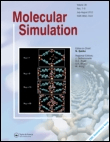
MOLECULAR SIMULATION
Scope & Guideline
Bridging disciplines with cutting-edge molecular modeling.
Introduction
Aims and Scopes
- Molecular Dynamics Simulations:
A core focus of the journal is the use of molecular dynamics simulations for studying the structural and dynamical properties of various materials and biological systems. This includes insights into mechanical properties, thermal behaviors, and molecular interactions. - Computational Chemistry and Drug Discovery:
The journal frequently publishes research on molecular docking, virtual screening, and pharmacophore modeling aimed at drug discovery and development, particularly for targeting diseases like cancer and viral infections. - Material Science Applications:
Research in material science, including the study of nanomaterials, polymers, and composites, is prominently featured, highlighting the use of simulations to predict and analyze material properties and behaviors. - Interfacial and Surface Phenomena:
There is a consistent emphasis on the study of interfacial phenomena and adsorption processes, particularly involving nanostructured materials and their interactions with fluids. - Multiscale Modeling:
The journal encourages studies that integrate different scales of modeling, from atomistic to continuum approaches, to better understand complex systems and phenomena.
Trending and Emerging
- Machine Learning in Molecular Simulations:
There is a growing trend towards integrating machine learning techniques within molecular simulations to enhance predictive capabilities and optimize simulations, reflecting the broader technological advancements in computational science. - COVID-19 Related Research:
In recent years, there has been a notable increase in research focused on COVID-19, particularly in the context of drug repurposing and the molecular dynamics of viral proteins, showcasing the journal's responsiveness to global health challenges. - Biomolecular Interactions and Drug Design:
Research on biomolecular interactions, particularly related to drug design and the identification of inhibitors for various diseases, is gaining prominence, highlighting the journal's role in advancing medicinal chemistry and pharmacology. - Nanomaterials and Their Applications:
The exploration of nanomaterials, including their mechanical properties and interactions with biological systems, is increasingly featured, demonstrating an interest in both fundamental science and practical applications. - Environmental and Sustainable Chemistry:
Emerging themes related to environmental applications, such as carbon capture and sustainable materials, indicate a shift towards addressing pressing global issues through molecular simulation techniques.
Declining or Waning
- Traditional Force Field Development:
The focus on developing new traditional force fields has decreased, as the community shifts towards more advanced methods such as machine learning potentials and hybrid quantum mechanics/molecular mechanics approaches. - Basic Thermodynamic Studies:
There has been a decline in the publication of purely thermodynamic studies without computational modeling integration, as researchers increasingly combine thermodynamic principles with molecular dynamics to derive insights. - Classical Monte Carlo Methods:
The application of classical Monte Carlo methods alone is less common in recent articles, as researchers favor molecular dynamics and hybrid methods that provide more detailed temporal and spatial information.
Similar Journals

Chem-Bio Informatics Journal
Transforming Data into Discoveries in BiochemistryChem-Bio Informatics Journal is a dedicated platform for the dissemination of innovative research in the intersecting realms of biochemistry and computational science. Published by the CHEM-BIO INFORMATICS SOC in Japan, this journal embraces the rapidly evolving field of chemoinformatics and bioinformatics, fostering scholarly communication among researchers, professionals, and students alike. With its ISSN: 1347-6297 and E-ISSN: 1347-0442, the journal continues to enrich the scientific community by offering insights into novel methodologies and applications that bridge chemistry and biology. Although currently positioned in the fourth quartile in the biochemistry category according to Scopus rankings, contributing to this journal provides an invaluable opportunity for authors to showcase impactful findings that could resonate within the field. The journal is particularly committed to supporting interdisciplinary research that addresses complex biological problems through computational modeling and data analysis. By publishing high-quality and peer-reviewed articles, Chem-Bio Informatics Journal aims to enhance the scientific discourse and is poised to become a pivotal resource for advancing the frontiers of biochemistry and molecular biology.

Journal of Cheminformatics
Unveiling the potential of cheminformatics for all.Journal of Cheminformatics, published by BMC, is a premier open-access journal that has been a cornerstone of cheminformatics research since its inception in 2009. With an ISSN of 1758-2946, this journal operates from the heart of the United Kingdom, providing a dynamic platform for disseminating high-quality, peer-reviewed articles that explore the integration of computer science with chemistry. The journal proudly stands in the prestigious Q1 category across multiple disciplines, including Computer Graphics, Computer-Aided Design, and Library and Information Sciences, showcasing its exceptional impact in the fields of cheminformatics and computational chemistry. Additionally, it ranks impressively in various Scopus categories, with notable placements such as #7 in Library and Information Sciences and #15 in Physical and Theoretical Chemistry, demonstrating its significance to the academic community. As a leader in open-access publishing, the Journal of Cheminformatics ensures that cutting-edge research and innovations are freely accessible to researchers, professionals, and students alike, fostering collaboration and advancement in this rapidly evolving field.

Journal of Physical Studies
Exploring the Depths of Physical Science ResearchJournal of Physical Studies, published by the WEST UKRAINIAN PHYSICAL SOC, is a prominent academic journal dedicated to disseminating research in the field of physics and astronomy. Established in 2004 and continuing through to 2024, the journal aims to provide a platform for original research, reviews, and innovative theoretical developments that contribute to the understanding and advancement of physical sciences. With an ISSN of 1027-4642 and E-ISSN of 2310-0052, this journal is recognized for its commitment to fostering scholarly communication within the scientific community. Although currently listed in Q3 of the Physics and Astronomy category, it has the potential for upward trajectory, as evidenced by its ranking of #192 among 243 journals in the general physics category (2023 Scopus Ranks). Situated in Lviv, Ukraine, this journal plays a vital role in enriching the academic landscape, particularly among researchers, professionals, and students seeking access to critical insights and developments in physics. Readers can explore research articles, fostering a collaborative and expansive view of current trends and advancements in the field.
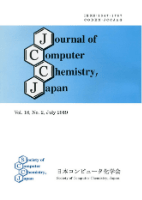
Journal of Computer Chemistry-Japan
Elevating Research in Computational Methods and TechniquesJournal of Computer Chemistry-Japan, published by SOC COMPUTER CHEMISTRY, JAPAN, is a dedicated platform for researchers and professionals in the interdisciplinary fields of computational chemistry and chemical informatics. Though the journal does not currently provide open access, it maintains a rigorous selection process for contributions, ensuring the publication of high-quality, peer-reviewed research. With a focus on advancing computational methods and techniques to solve complex chemical problems, the journal aims to bridge the gap between theoretical chemistry and practical applications, making it an invaluable resource for academics and industry professionals alike. As the complexity of chemical systems continues to rise, the relevance of computational approaches in material science, drug discovery, and molecular modeling has never been more critical. Researchers are encouraged to engage with the contents of this journal, which showcases innovative studies, methodologies, and discussions relevant to the evolving landscape of computer-aided chemistry.
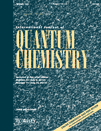
INTERNATIONAL JOURNAL OF QUANTUM CHEMISTRY
Fostering Breakthroughs in Quantum Chemical ScienceInternational Journal of Quantum Chemistry is a distinguished scholarly publication that has been at the forefront of advancements in the realm of quantum chemistry since its inception in 1967. Published by Wiley in the United States, this journal holds a significant place in the academic community, currently indexed in the Q3 quartile across various categories including Atomic and Molecular Physics, Condensed Matter Physics, and Physical and Theoretical Chemistry. With an ISSN of 0020-7608 and an E-ISSN of 1097-461X, the journal offers a platform for researchers and professionals to disseminate cutting-edge findings in quantum chemical research. While it operates under a traditional subscription model, the journal remains committed to enhancing the visibility of its contributions within the scientific community. With a convergence of research that spans from 1967 to 2024, the International Journal of Quantum Chemistry is pivotal for anyone looking to advance their understanding and application of quantum principles in chemistry, providing valuable insights into the microscopic interactions that govern matter and its properties.

Current Research in Structural Biology
Bridging Theory and Practice in Molecular ScienceCurrent Research in Structural Biology, published by Elsevier, is a pioneering Open Access journal that has rapidly gained prominence since its inception in 2019. With a focus on advancing the understanding of molecular and structural biology, this journal provides a platform for researchers and professionals to publish groundbreaking findings that contribute to the field's ongoing development. With a commendable Q2 ranking in both Molecular Biology and Structural Biology categories for 2023, it serves as a vital resource for the community, ensuring accessibility to high-quality research. The journal is indexed in Scopus, showcasing its significant impact and relevance, particularly with a ranking of #26/49 in the Structural Biology discipline. Located in the heart of the Netherlands, Current Research in Structural Biology not only fosters academic discourse but also encourages collaborative research efforts in addressing critical biological questions. Whether you are a researcher, student, or industry professional, this journal is essential for staying abreast of the latest advancements and trends in structural biology.
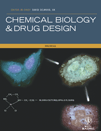
Chemical Biology & Drug Design
Bridging theory and practice in chemical biology and pharmacology.Chemical Biology & Drug Design, an esteemed publication by WILEY, serves as a vital platform for the dissemination of pioneering research in the interdisciplinary fields of biochemistry, drug discovery, molecular medicine, organic chemistry, and pharmacology. With a dedicated commitment to advancing the understanding of chemical interactions and drug development, this journal not only fosters innovation but also bridges the gap between theoretical research and practical applications. It boasts an impressive impact factor and is recognized in the 2023 category quartiles as Q3 in Biochemistry and Molecular Medicine, and Q2 in Drug Discovery, Organic Chemistry, and Pharmacology, indicating its relevance and influence in these crucial areas. The journal’s rankings across various Scopus categories further solidify its position as a reputable resource for researchers, professionals, and students striving to stay at the forefront of medicinal chemistry and drug design. While primarily traditional access-based, the journal's evolving scope from 2006 to 2024 ensures an ongoing contribution to essential scientific dialogue, making it an indispensable read for those committed to advancing health sciences.
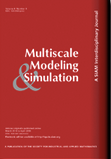
MULTISCALE MODELING & SIMULATION
Advancing the frontiers of multiscale research.MULTISCALE MODELING & SIMULATION, published by SIAM PUBLICATIONS, is a premier journal dedicated to advancing the field of multiscale modeling across various domains including chemistry, computer science, ecological modeling, and physics. With an impressive impact factor, this journal consistently ranks in the Q1 category for diverse disciplines, underscoring its outstanding contribution to the scientific community. The journal's scope encompasses innovative simulation techniques and theoretical advancements that aim to bridge the gaps between different scales of physical phenomena, making it an essential resource for researchers, professionals, and students alike. Though it does not currently offer open access, its rigorous peer-review process ensures that only the highest quality research is disseminated. Covering a dynamic range of topics from 2003 through 2024, MULTISCALE MODELING & SIMULATION remains a vital platform for interdisciplinary collaboration and exploration in the rapidly evolving landscapes of science and engineering.

BIOPHYSICAL CHEMISTRY
Elevating academic discourse in biochemistry and biophysics.BIOPHYSICAL CHEMISTRY, published by Elsevier, is a prestigious journal with a long-standing tradition since its inception in 1973. This highly respected journal focuses on the intersections of biochemistry, biophysics, and organic chemistry, providing a critical platform for researchers, professionals, and students to disseminate pivotal findings in these dynamic fields. With an impressive impact factor that reflects its robust academic influence and high citation rates, it ranks within the Q2 quartile among its peers in multiple categories, indicating its significance in the scholarly community. The journal, hosted in the Netherlands, encompasses a diverse range of topics, from molecular interactions to protein folding, and serves as an essential resource for those engaged in cutting-edge research. Researchers looking to share their work with a global audience will find BIOPHYSICAL CHEMISTRY an invaluable outlet, fostering the advancement of knowledge in this crucial area of science. For more information, visit the journal's page on the Elsevier platform.
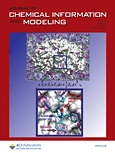
Journal of Chemical Information and Modeling
Exploring the Nexus of Chemistry and Data Science.Journal of Chemical Information and Modeling is a premier scholarly publication dedicated to advancing the fields of chemical engineering, chemistry, and computer science applications. Published by the reputable American Chemical Society, this journal significantly contributes to the scientific community through innovative research and critical reviews that facilitate the understanding and application of chemical information. With an impressive impact factor and a distinguished ranking in multiple categories—such as Q1 in Chemical Engineering and Q1 in Chemistry—the journal is an indispensable resource for researchers and professionals alike. As open access is not currently available, the journal preserves a selective distribution model that ensures high-quality content is accessible to a dedicated audience. By exploring the intersections of data science and chemical informatics, the Journal of Chemical Information and Modeling fosters interdisciplinary collaboration and innovation, positioning itself as a leader in its field. Researchers, professionals, and students are encouraged to engage with this influential platform for the latest developments in chemical information science.